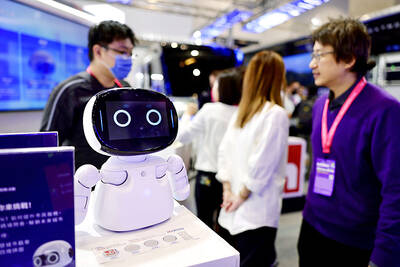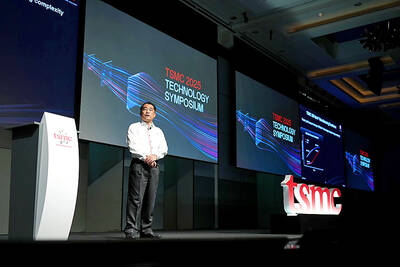National Australia Bank (NAB) said “all options” were on the table regarding takeover target AXA Asia Pacific and it was close to deciding whether to push ahead with its failed bid.
NAB’s US$12.2 billion offer for AXA’s Australia and New Zealand businesses was rejected by competition officials for a second time on Thursday over fears it would shrink the local financial services industry.
Analysts expect NAB to walk away from the bid because AXA’s value has slipped since the initial offer, but bank spokesman Steve Tucker said it was still mulling whether to make a court challenge or further amendments.
“All the options are being considered at this stage,” Tucker told ABC television. “That’s the sensible thing to do, just to take our time and think it through, and we’ll make a pretty timely decision over the next few days.”
Tucker said NAB had done “quite a lot” to try to address the concerns of Australia’s Competition and Consumer Commission (ACCC) since it knocked back the bank’s initial offer in April, and it disagreed with the second rebuff.
“You have to be careful to get the balance between satisfying the concerns of the ACCC and keeping the integrity of the value of the deal in place. We thought we’d done that with a good package. We were disappointed to get the no decision,” Tucker said.
ACCC deputy chairman Peter Kell said AXA was emerging as a “vigorous and effective competitor” and the merger would have “taken them out of the picture.”
Kell said NAB’s offer to divest key technology did not go far enough because the bank would still have taken AXA’s distribution network and products and benefited from the “significant investment” it had made building a profile.
Under the arrangement, French parent company AXA SA would have taken charge of its subsidiary’s Asian arm, while NAB would control the Australian and New Zealand businesses.
Rival suitor AMP made an initial US$11.5 billion offer, which was elbowed aside by NAB, and it has said it still considers the deal “strategically attractive” at the right price.
Kell said the ACCC didn’t “have the same competition concerns about AMP,” and would not oppose its bid.
“But ultimately, whether AMP wants to take some further steps now is entirely up to them,” he said.

DEMOGRAPHICS: Robotics is the most promising answer to looming labor woes, the long-term care system and national contingency response, an official said Taiwan is to launch a five-year plan to boost the robotics industry in a bid to address labor shortages stemming from a declining and aging population, the Executive Yuan said yesterday. The government approved the initiative, dubbed the Smart Robotics Industry Promotion Plan, via executive order, senior officials told a post-Cabinet meeting news conference in Taipei. Taiwan’s population decline would strain the economy and the nation’s ability to care for vulnerable and elderly people, said Peter Hong (洪樂文), who heads the National Science and Technology Council’s (NSTC) Department of Engineering and Technologies. Projections show that the proportion of Taiwanese 65 or older would

Nvidia Corp yesterday unveiled its new high-speed interconnect technology, NVLink Fusion, with Taiwanese application-specific IC (ASIC) designers Alchip Technologies Ltd (世芯) and MediaTek Inc (聯發科) among the first to adopt the technology to help build semi-custom artificial intelligence (AI) infrastructure for hyperscalers. Nvidia has opened its technology to outside users, as hyperscalers and cloud service providers are building their own cost-effective AI chips, or accelerators, used in AI servers by leveraging ASIC firms’ designing capabilities to reduce their dependence on Nvidia. Previously, NVLink technology was only available for Nvidia’s own AI platform. “NVLink Fusion opens Nvidia’s AI platform and rich ecosystem for

Taiwan Semiconductor Manufacturing Co (TSMC, 台積電) yesterday said it is building nine new advanced wafer manufacturing and packaging factories this year, accelerating its expansion amid strong demand for high-performance computing (HPC) and artificial intelligence (AI) applications. The chipmaker built on average five factories per year from 2021 to last year and three from 2017 to 2020, TSMC vice president of advanced technology and mask engineering T.S. Chang (張宗生) said at the company’s annual technology symposium in Hsinchu City. “We are quickening our pace even faster in 2025. We plan to build nine new factories, including eight wafer fabrication plants and one advanced

‘WORLD’S LOSS’: Taiwan’s exclusion robs the world of the benefits it could get from one of the foremost practitioners of disease prevention and public health, Minister Chiu said Taiwan should be allowed to join the World Health Assembly (WHA) as an irreplaceable contributor to global health and disease prevention efforts, Minister of Foreign Affairs Lin Chia-lung (林佳龍) said yesterday. He made the comment at a news conference in Taipei, hours before a Taiwanese delegation was to depart for Geneva, Switzerland, seeking to meet with foreign representatives for a bilateral meeting on the sidelines of the WHA, the WHO’s annual decisionmaking meeting, which would be held from Monday next week to May 27. As of yesterday, Taiwan had yet to receive an invitation. Taiwan has much to offer to the international community’s